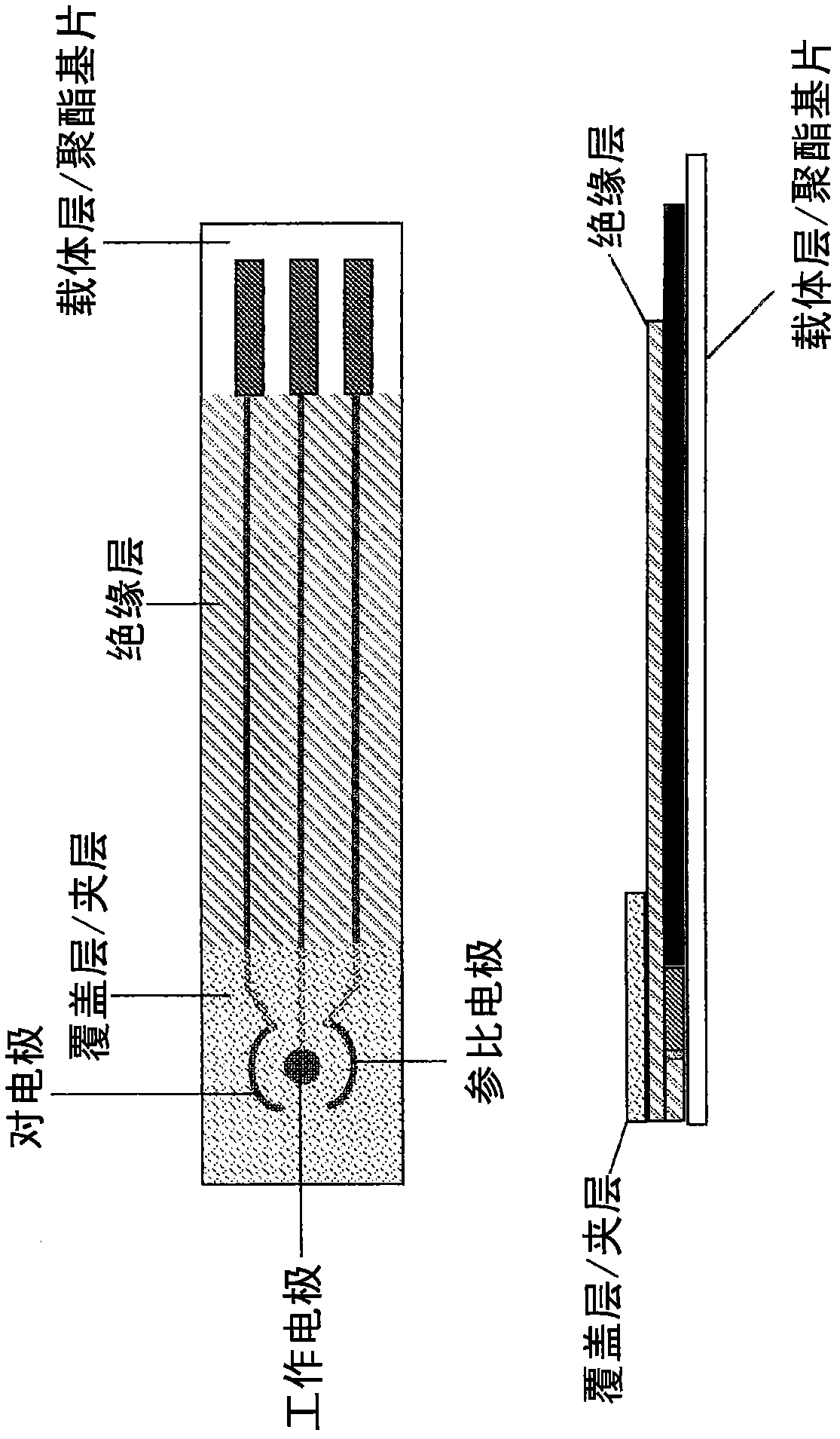Electrochemical biosensor for direct determination of percentage of glycated hemoglobin
A technology of glycosylated hemoglobin and biosensors, which is applied in the field of electrochemical biosensors and can solve problems such as target molecular dysfunction
- Summary
- Abstract
- Description
- Claims
- Application Information
AI Technical Summary
Problems solved by technology
Method used
Image
Examples
Embodiment 1
[0104] Example 1: By pipetting the sample onto the biosensor or immersing the biosensor in the sample Electrochemical sensing of HbA1c
[0105] Prepare a biosensor with working, reference, and counter electrodes. Both the working electrode and the counter electrode were Ir-carbon modified; and the reference electrode was an Ag / AgCl electrode. Working and counter electrodes were prepared by screen printing on polyester substrates. The electrical connections of these electrodes were silver and the electrodes were first printed with silver ink. The Ir-carbon ink was further printed on the silver-based electrodes. Ir-carbon inks were prepared by mixing and homogenizing 0.5-2 g of Ir-carbon with 5-30 ml of an ink-based solution (containing polyethyleneimine and 2-hydroxyethylcellulose). The working electrode also contains fructosyl amino acid oxidase. A fructosyl amino acid oxidase (such as FVO having the amino acid sequence shown in SEQ ID NO: 1 ) ink was prepared by mixin...
Embodiment 2
[0109] Example 2: Electrochemical sensing of HbA1c using a biosensor with a capillary filling device
[0110] The biosensors described in Example 1 were hand laminated to form capillary filling devices. See Figure 4 .
[0111] The biosensor was immersed in the incubation solution of Example 1 for a few seconds to fill the microchannels with hemolysate by capillary action. The biosensor is then used for electrochemical measurements. Electrochemical measurements were performed for 120 seconds at +0.25 V vs. Ag / AgCl reference electrode. The measured current for each sample is shown in Figure 7 middle. Figure 7 The data in demonstrate that the current measured from the biosensor fits a linear model with the percentage HbA1c in the blood sample, and that the biosensor and the method can be used to determine the percentage of HbA1c without measuring total hemoglobin alone.
PUM
 Login to View More
Login to View More Abstract
Description
Claims
Application Information
 Login to View More
Login to View More - R&D
- Intellectual Property
- Life Sciences
- Materials
- Tech Scout
- Unparalleled Data Quality
- Higher Quality Content
- 60% Fewer Hallucinations
Browse by: Latest US Patents, China's latest patents, Technical Efficacy Thesaurus, Application Domain, Technology Topic, Popular Technical Reports.
© 2025 PatSnap. All rights reserved.Legal|Privacy policy|Modern Slavery Act Transparency Statement|Sitemap|About US| Contact US: help@patsnap.com



